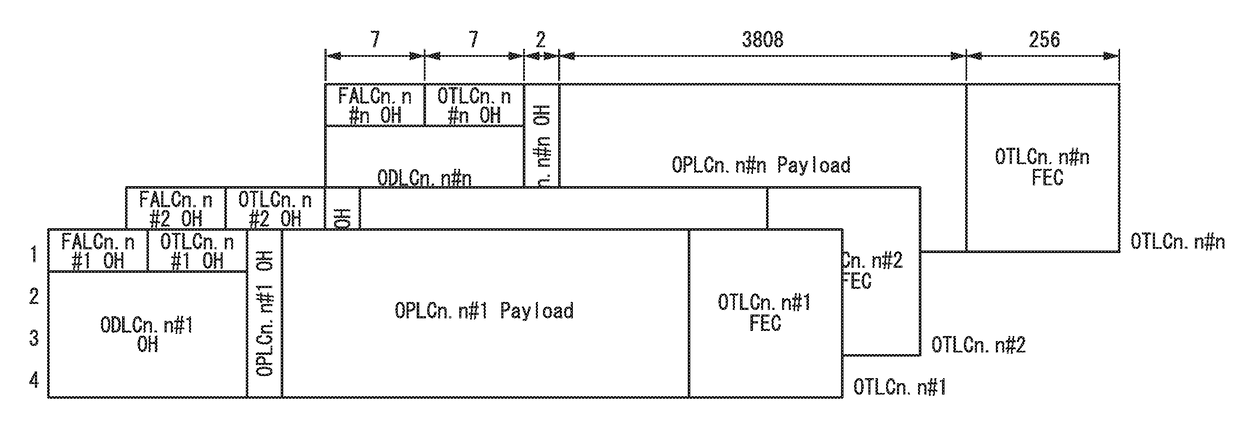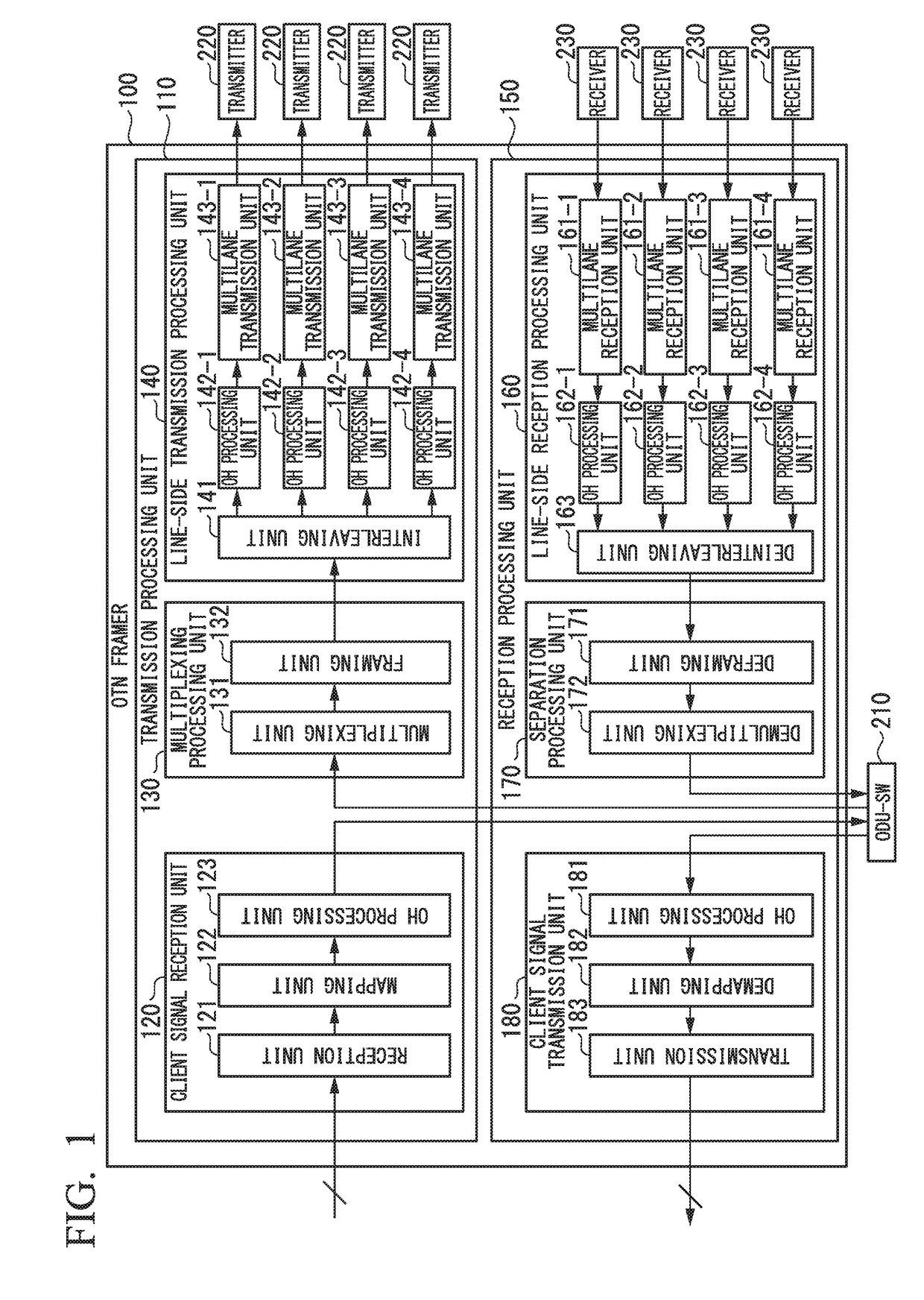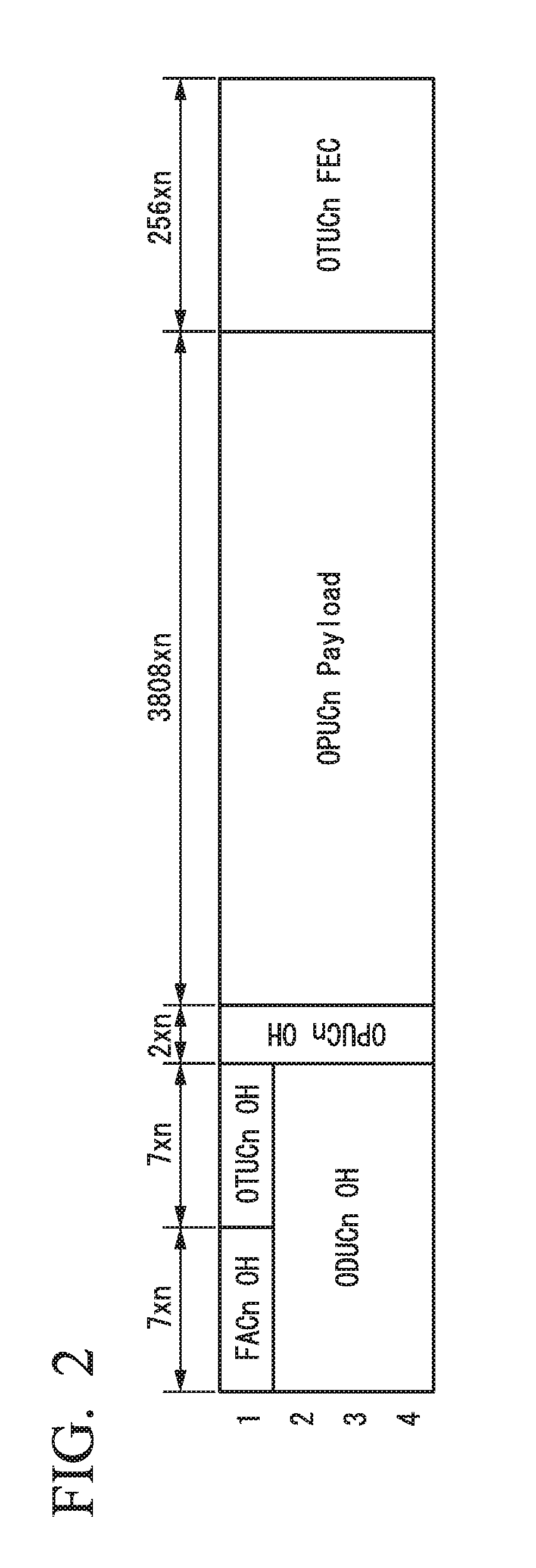Optical transport system and resource optimization method
a technology of optical transport system and optimization method, which is applied in the field of optical transport system and resource optimization method, can solve the problems of difficult to expand single carrier transport in a band of one optical channel as before to achieve a larger capacity, and achieve the effect of eliminating fragmentation and enhancing resource utilization efficiency
- Summary
- Abstract
- Description
- Claims
- Application Information
AI Technical Summary
Benefits of technology
Problems solved by technology
Method used
Image
Examples
first embodiment
[0086]FIG. 5 is a block diagram showing a configuration of an optical transport system in a first embodiment of the present invention. As shown in the figure, the optical transport system in the first embodiment includes an optical transmitter 30, an optical receiver 40, and a transport path 50 (optical fiber). Further, FIG. 5 shows a frame structure used in the optical transmitter 30 and the optical receiver 40.
[0087]The optical transmitter 30 includes a plurality of client accommodation units 31, a time-multiplexing processing unit 32, a transport frame generation unit 33, i subcarrier transmission units 34-1 to 34-i, a time slot (TS) control unit 35, and a power source control unit 36. The client accommodation units 31 correspond to the client signal reception unit 120 in FIG. 1. The time-multiplexing processing unit 32 corresponds to the ODU-SW 210 and the multiplexing unit 131 in FIG. 1. The transport frame generation unit 33 corresponds to the framing unit 132 and the line-sid...
second embodiment
[0162]In the optical transport system in the first embodiment, when changing the allocation to time slots, signal cut-off occurs in the optical receiver 40 due to a guard time during which the same MSI is received a predetermined number of times and then use of a new MSI is started, a round-trip time of a transport multi-frame, or the like (FIG. 11). In an optical transport system in the second embodiment, an operation of preventing signal cut-off when changing the allocation of electric path signals to time slots is performed. In the optical receiver 40 in the second embodiment, setting of the guard time when switching a time slot utilization situation table is temporarily released, and the MSI is changed without receiving the same MSI a predetermined number of times.
[0163]FIG. 20 is a diagram showing an operation example of the optical transmitter 30 and the optical receiver 40 in the second embodiment. In FIG. 20, a lateral axis represents time. The optical receiver 40 receives a...
third embodiment
[0167]In the optical transport system in the first and second embodiments, switching information is transported using an overhead of a transport frame which serves as a main signal. In an optical transport system in accordance with a third embodiment, switching information is transported using a supervisory channel which is a signal having a wavelength that is different from that of the main signal, or using another communication path. FIG. 21 is a block diagram showing a configuration of the optical transport system in the third embodiment. As shown in the figure, the optical transport system in the third embodiment includes an optical transmitter 30A, an optical receiver 40A, and a transport path 50.
[0168]The optical transmitter 30A includes a plurality of client accommodation units 31, a time-multiplexing processing unit 32, a transport frame generation unit 33, i subcarrier transmission units 34-1 to 34-i, a TS (time slot) control unit 35, a power source control unit 36, and a c...
PUM
 Login to View More
Login to View More Abstract
Description
Claims
Application Information
 Login to View More
Login to View More - R&D
- Intellectual Property
- Life Sciences
- Materials
- Tech Scout
- Unparalleled Data Quality
- Higher Quality Content
- 60% Fewer Hallucinations
Browse by: Latest US Patents, China's latest patents, Technical Efficacy Thesaurus, Application Domain, Technology Topic, Popular Technical Reports.
© 2025 PatSnap. All rights reserved.Legal|Privacy policy|Modern Slavery Act Transparency Statement|Sitemap|About US| Contact US: help@patsnap.com



